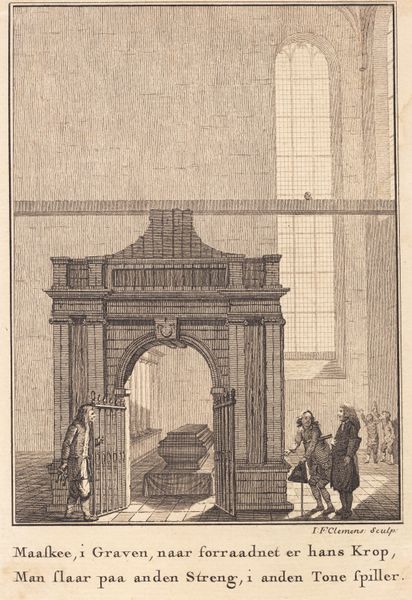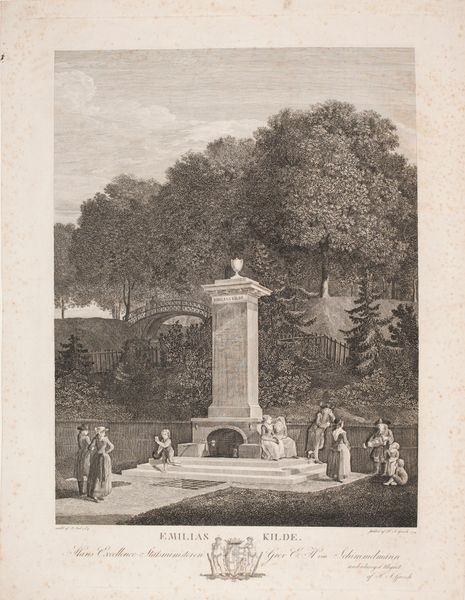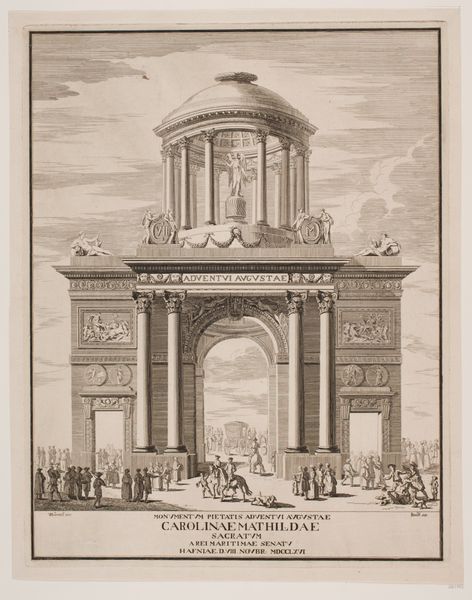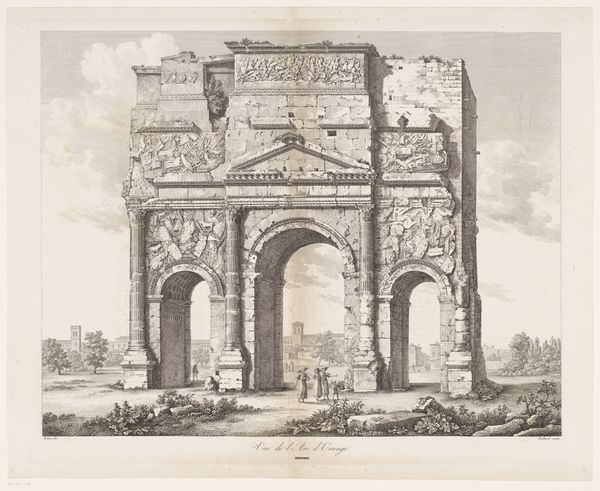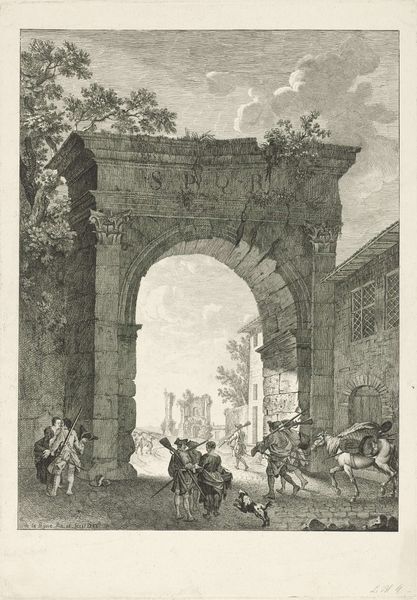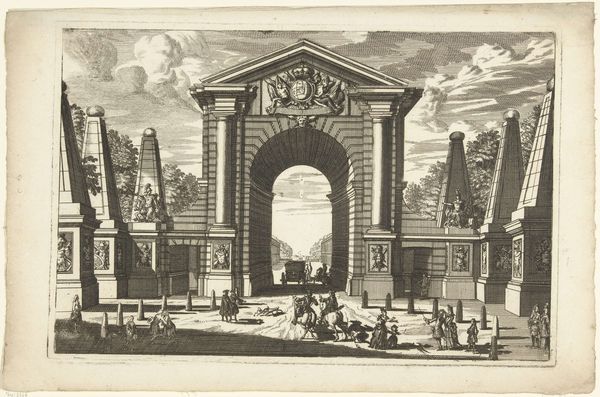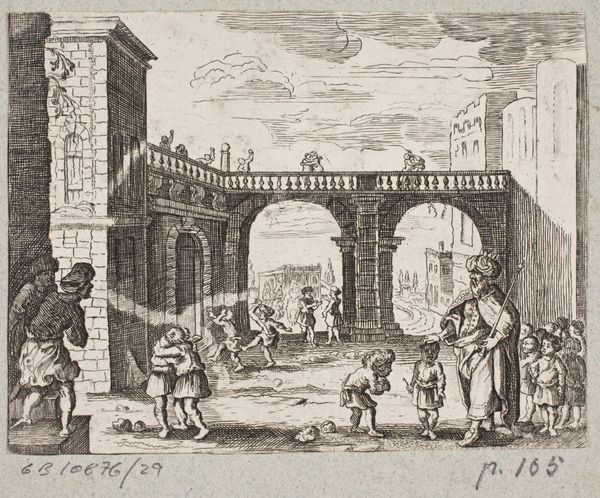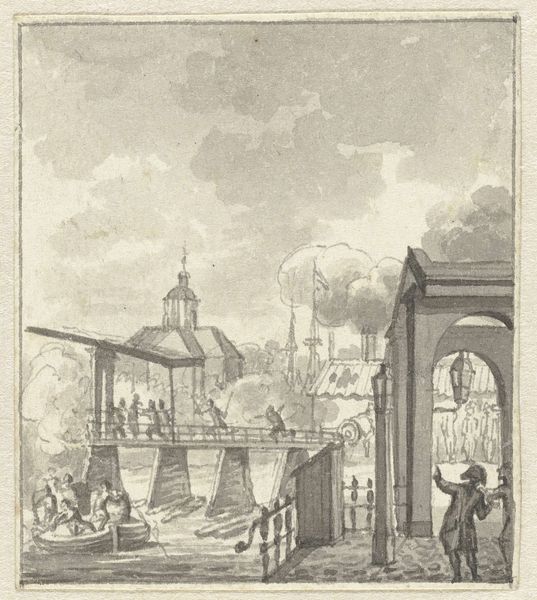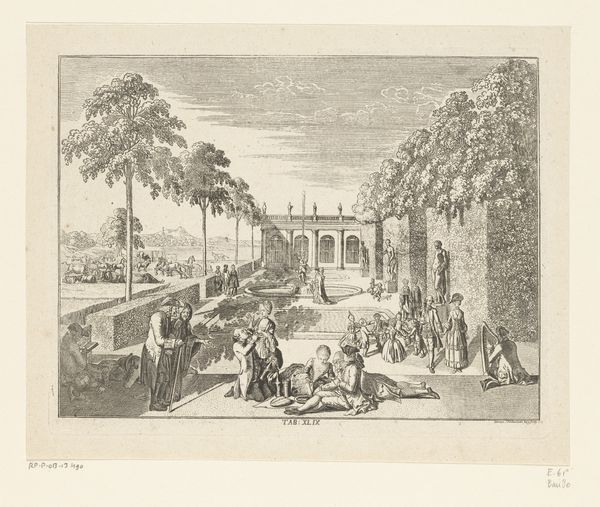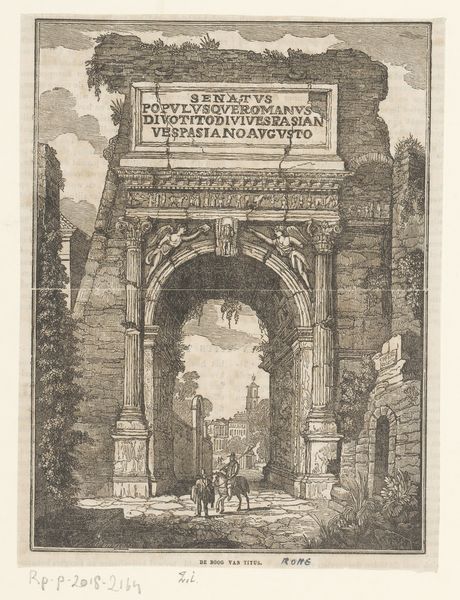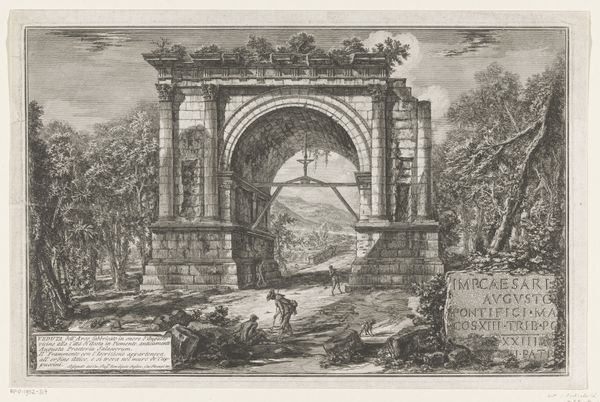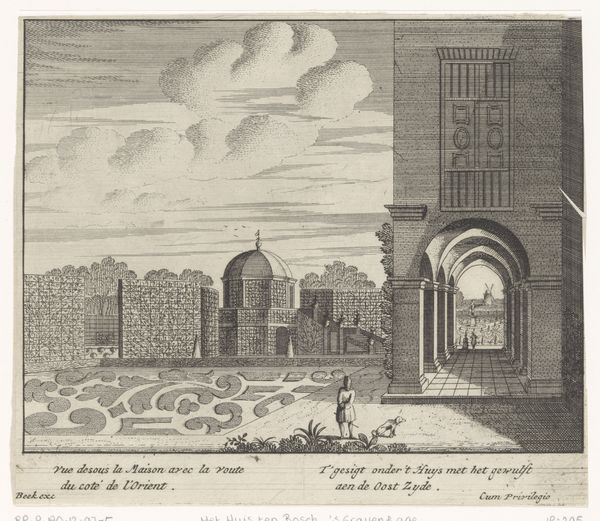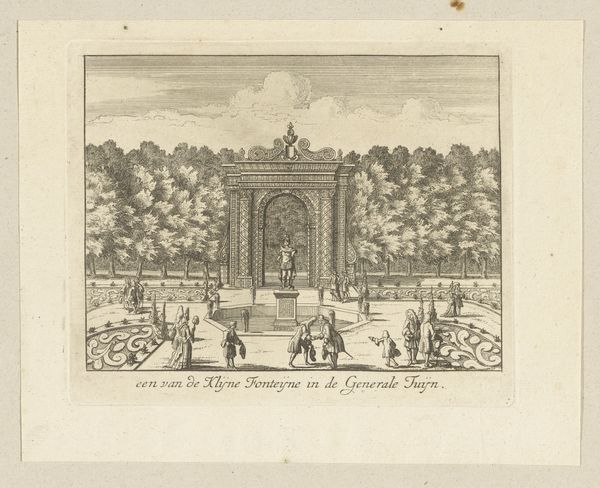
drawing, print, engraving
#
drawing
#
neoclacissism
# print
#
landscape
#
cityscape
#
history-painting
#
engraving
Dimensions: 128 mm (height) x 117 mm (width) (plademaal)
Curator: This engraving, "Den store Stad," which translates to "The Great City," was created by Oluf Olufsen Bagge in 1818. Editor: Immediately, I'm struck by its architectural severity. It feels imposing, almost theatrical. The archway, the flanking statues...it's a stage set, isn't it, hinting at grand civic dramas. Curator: Precisely. It reflects the Neoclassical ideals that were prominent at the time – a vision of order, reason, and a romanticized view of ancient Greece and Rome. Editor: And those tiny figures walking through...they feel so small, so insignificant, almost overwhelmed by the sheer scale of the architecture. Is that intentional, a commentary on the individual versus the state? Curator: It certainly can be interpreted that way. The artist seems to be exploring the individual’s place within the context of a rapidly changing urban environment. Remember that early 19th-century cities were centers of intense social and political ferment. This image may be hinting at the power structures inherent within city life. Editor: And yet, despite the overall austerity, there's something romantic, even whimsical, in the way the light falls on the scene and in the attention that the artist gave to the characters occupying this world. Curator: Absolutely. While technically precise as an engraving, it isn't a sterile record. It holds a unique mood through carefully modulated shades and the almost dream-like backdrop to the "great city". The inclusion of such figures adds a human element, softens the harshness. We can recognize our fellow human in it still, can't we? Editor: You're right. I started out thinking 'grandeur,' but I end seeing it as almost a story. I'd love to wander through it myself. Curator: That’s the enduring power of art, isn’t it? How it makes the abstract visceral.
Comments
No comments
Be the first to comment and join the conversation on the ultimate creative platform.
